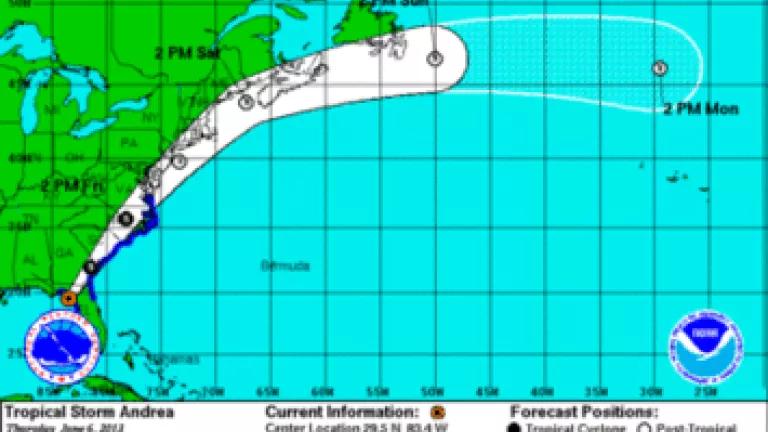
Oklahoma has received more than its share of tragic extreme weather in the last month, and our thoughts and prayers are with the victims and families who have lost loved ones. Tornados have caused enormous damage and loss of life on two separate occasions this year, most recently last weekend.
But Oklahoma is not the only place where weather related disaster has struck in the opening days of June.
Also last weekend, the East Coast was battered by storms, causing broken trees and downed power lines. And Tropical Storm Andrea, the first named storm of the year, is currently tracking up the East Coast.
Given how many severe weather events the month of June is already serving up, let’s do a quick survey of climate preparedness efforts in the states affected, including the East Coast and Oklahoma. The ratings below are taken from NRDC’s Ready or Not report.
There are actually a large number of states that are doing a better job than most, but that’s not to say they’re adequately prepared. And among the states doing a poor job of climate preparedness are Florida (a frequent location for hurricane landfall) and Oklahoma (which experiences a high frequency of extreme weather events).
|
Ready or Not Rating |
States |
|
1 |
Maryland, Pennsylvania, New York, Massachusetts |
|
2 |
North Carolina, Delaware, New Jersey, Connecticut, New Hampshire, Maine |
|
3 |
Florida, Georgia, South Carolina, Virginia and Oklahoma |
|
4 |
No state in the recently affected areas ranked this category |
Across the nation as a whole about half the fifty states are not adequately preparing for climate change and the more frequent and severe weather scientists tell us to expect.
Among those are hurricane prone states like Texas, Louisiana, Alabama, Mississippi, and the aforementioned Florida.
Surprisingly the Federal Emergency Management Agency (FEMA) does not provide guidance to states on how to incorporate climate change into their hazard reduction plans, nor does FEMA require states to consider climate change in planning. NRDC has asked FEMA to address climate change, but we have yet to hear back.
For states that don’t want to wait for FEMA to develop guidance on climate change impacts see Getting Climate Smart, a report by NRDC and American Rivers. It’s an easy-to-use guide with hundreds of climate preparedness strategies. You can take a look at Ben Chou’s blog on NRDC’s Switchboard for his series on the Getting Climate Smart planning guide.
Every state and municipality in the U.S. can and should assess its climate risks and vulnerabilities and plan accordingly to protect public health and safety and to minimize damages. So far, the month of June is serving up extreme weather that illustrates why.

